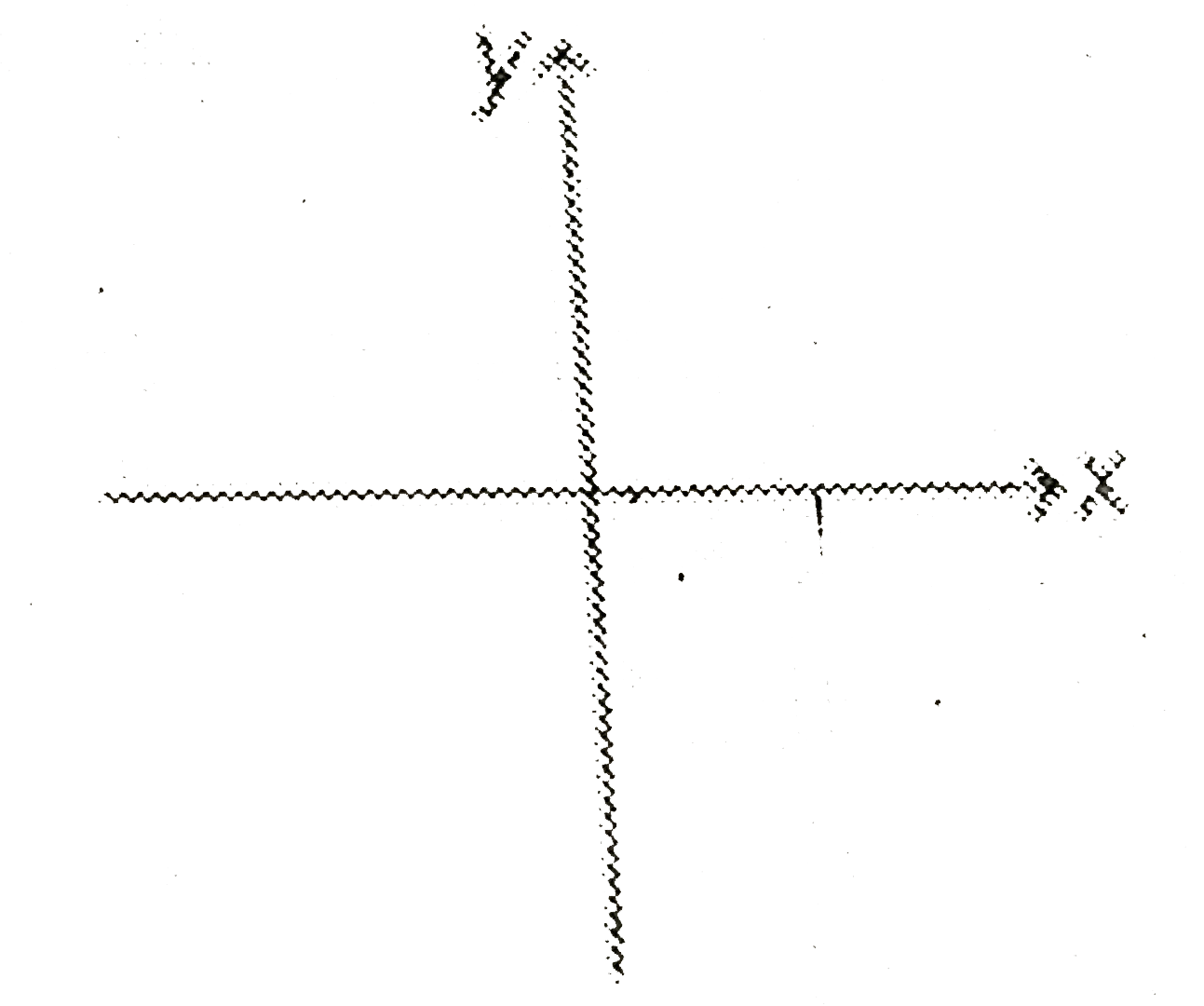Two SHMs directed along x-axis and y-axis are superimposed on a particle of mass m. If x=A1sinωt and y= A_2 sin(omegat+pi),then path of the particle will be.
Ellipse
Circle
Straight line with slope −A2A1
Straight line with slope 1
To solve the problem, we need to analyze the two simple harmonic motions (SHMs) given in the question:
1. Equations of Motion:
- The motion along the x-axis is given by:
x=A1sin(ωt)
- The motion along the y-axis is given by:
y=A2sin(ωt+π)
2. Simplifying the y-axis Equation:
- We know that sin(θ+π)=−sin(θ). Therefore, we can rewrite the equation for y as:
y=A2sin(ωt+π)=−A2sin(ωt)
- Thus, the equation for y becomes:
y=−A2sin(ωt)
3. Dividing the x and y Equations:
- Now we have:
x=A1sin(ωt)
y=−A2sin(ωt)
- Dividing the two equations, we get:
xy=A1sin(ωt)−A2sin(ωt)
- The sin(ωt) terms cancel out (as long as sin(ωt)≠0):
xy=−A1A2
4. Rearranging the Equation:
- Rearranging gives us:
y=−A2A1x
5. Identifying the Path:
- The equation y=mx+c represents a straight line where m is the slope and c is the y-intercept.
- Here, we have:
- Slope m=−A2A1
- y-intercept c=0
6. Conclusion:
- Therefore, the path of the particle will be a straight line with a slope of −A2A1.
Final Answer:
The path of the particle will be a straight line with slope −A2A1.
---
- The motion along the x-axis is given by:
x=A1sin(ωt)
- The motion along the y-axis is given by:
y=A2sin(ωt+π)
- We know that sin(θ+π)=−sin(θ). Therefore, we can rewrite the equation for y as:
y=A2sin(ωt+π)=−A2sin(ωt)
- Thus, the equation for y becomes:
y=−A2sin(ωt)
- Now we have:
x=A1sin(ωt)
y=−A2sin(ωt)
- Dividing the two equations, we get:
xy=A1sin(ωt)−A2sin(ωt)
- The sin(ωt) terms cancel out (as long as sin(ωt)≠0):
xy=−A1A2
- Rearranging gives us:
y=−A2A1x
- The equation y=mx+c represents a straight line where m is the slope and c is the y-intercept.
- Here, we have:
- Slope m=−A2A1
- y-intercept c=0
- Therefore, the path of the particle will be a straight line with a slope of −A2A1.
The path of the particle will be a straight line with slope −A2A1.
Similar Questions
A xandy co-ordinates of a particle are x=Asin(ωt)andy=Asin(ωt+π/2). Then, the motion of the particle is

View SolutionTwo simple harmonic motions y1=Asinωt and y2 = Acosωt are superimposed on a particle of mass m. The total mechanical energy of the particle is
View SolutionA particle is subjected to two mutually perpendicualr simple harmonic motions such that its x and y-coordinates are given by
x=sinωt, y=2cosωt
The path of the particle will be :
View SolutionThe displacement of a particle along the x- axis it given by x=asin2ωt The motion of the particle corresponds to
View SolutionA particle is subjected to two mutually perpendicular simple harmonic motions such that its X and y coordinates are given by X=2sinωt , y=2sin(ω+π4)
The path of the particle will be:
View SolutionThe displacement of a particle along the x-axis is given by x=asin2ωt. The motion of the particle corresponds to
View SolutionA particle is subjected to two simple harmonic motions
x1=A1sinωt
andx2=A2sin(ωt+π3)
Find a the displacement at t=0, b. the maxmum speed of the particle and c. the maximum acceleration of the particle
View SolutionA particle m starts with zero velocity along a line y=4d. The position of particle m varies as x=Asinωt, At ωt=π/2, its angular momentum with respect to the origin
View SolutionA particle moves on y-axis according to the equation y=3A+Bsinωt. Amplitude of motion is
View SolutionA particle is subjected to SHM as given by equations x1=A1sinωt and x2=A2sin(ωt+π/3).The maximum acceleration and amplitude of the resultant motion are it amax and A,respectively , then
View Solution
